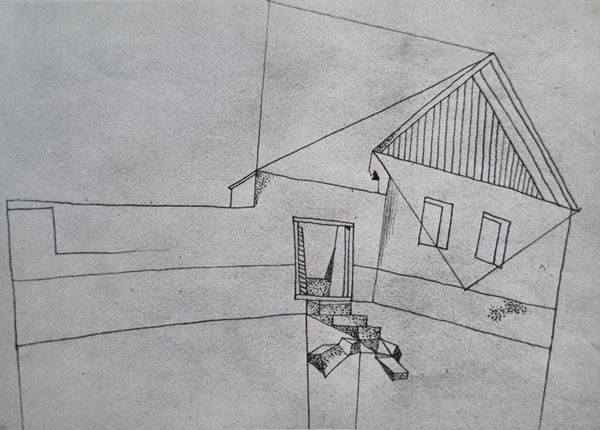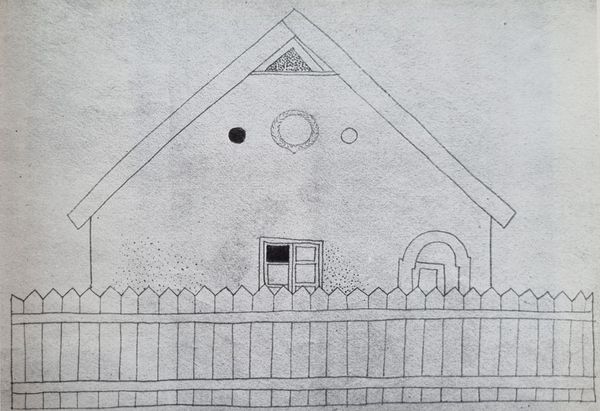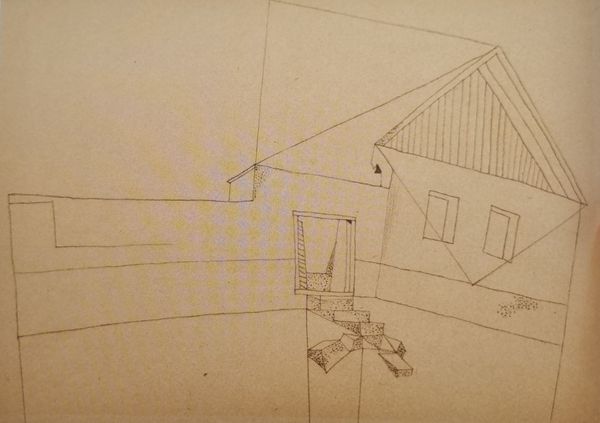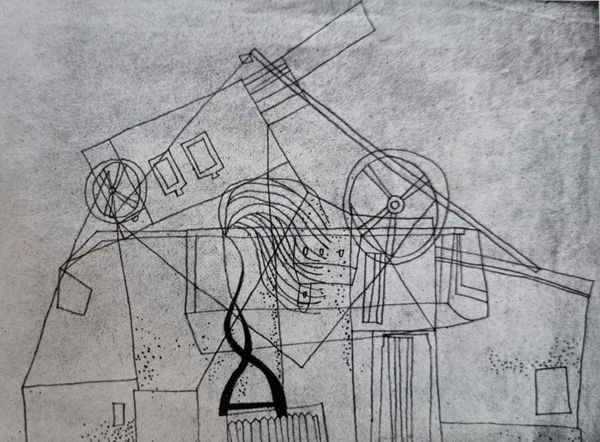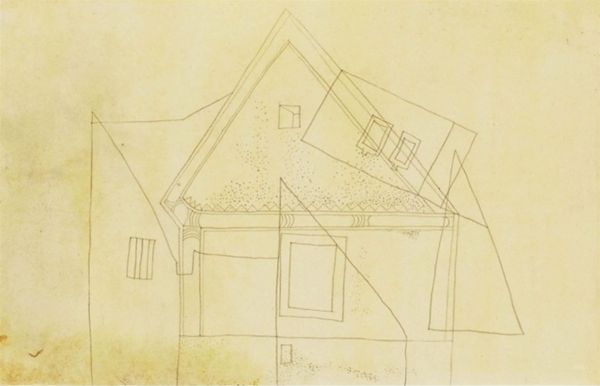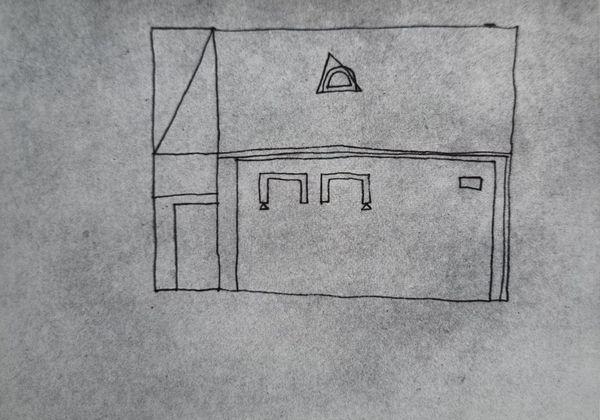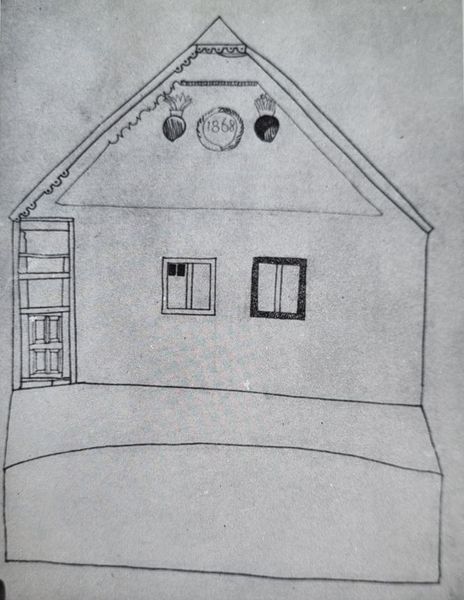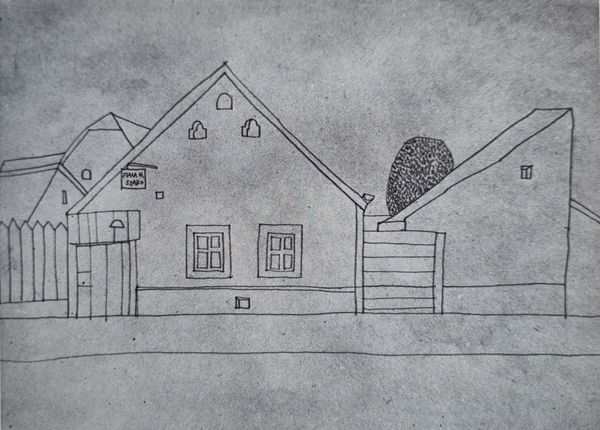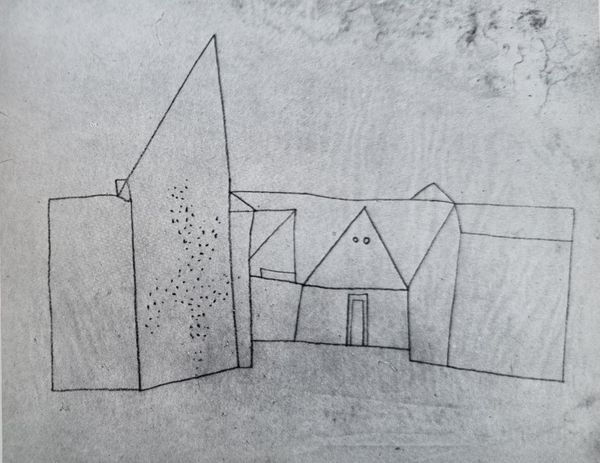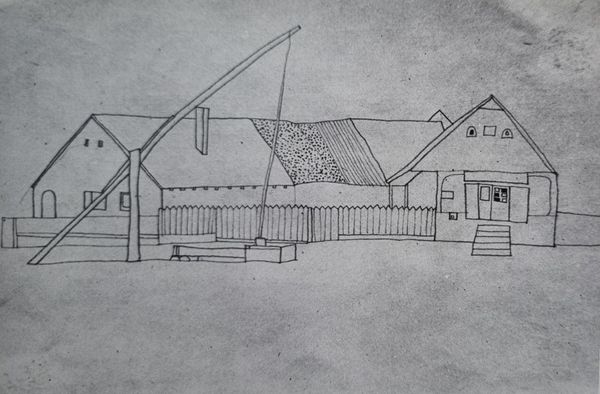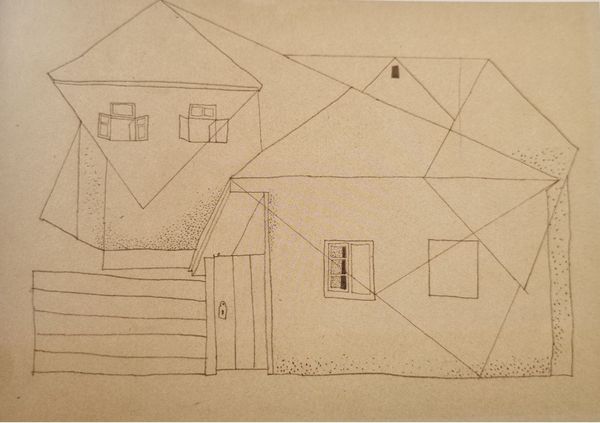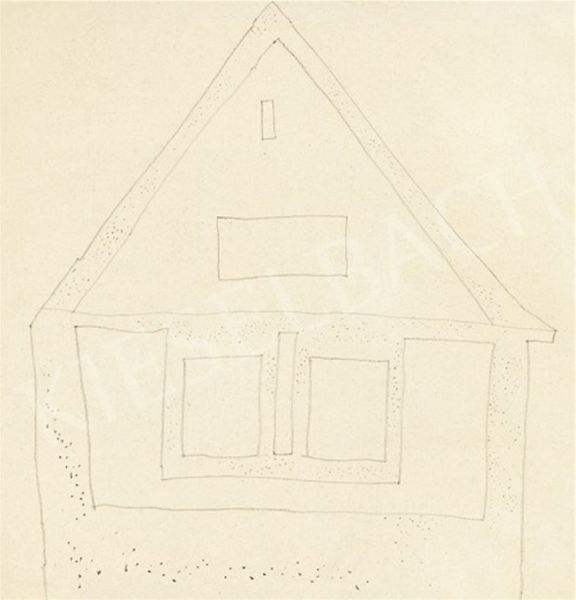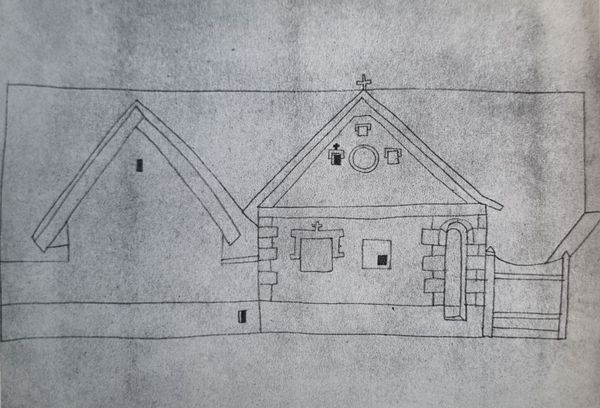
drawing, print, paper
#
drawing
# print
#
paper
#
geometric
#
abstraction
#
line
#
cityscape
Copyright: Public domain
Curator: We are looking at a cityscape by Vajda Lajos titled Hegyi Házak, which translates to Mountain Houses, rendered in 1936 using drawing and printmaking techniques on paper. Editor: Immediately, it strikes me as haunting. The stark, almost skeletal rendering of the buildings against that smoky background creates a disquieting mood. The lines are so precise, yet the overall impression is one of fragility. Curator: It's fascinating how Vajda achieved this level of detail using what seems to be a combination of drawing and printing processes. The material handling appears rather deliberate. The subtle tonal variations in the background suggest layers of ink, possibly through multiple print runs, influencing the final image quality. Editor: The geometric forms definitely pull me in. These stark shapes aren't just houses, but symbols, reduced to their barest forms, invoking a sense of universal architecture, of shelter and home stripped back to something almost primordial. Curator: You make an excellent point! Thinking about materials, one can explore how the texture of the paper support played into Vajda’s desired aesthetic and the implications of selecting cost-effective materials. Furthermore, we could dive into Vajda’s probable drawing processes on the plate itself: the tools used, their accessibility at the time and place... all significant contributing aspects to meaning, I would argue. Editor: Agreed. And considering these geometric forms in relation to symbols. What about those tiny windows and apertures – they look almost like eyes on these building-faces. Those add to that unsettling feeling, and evoke thoughts about home not being a haven but an exposing presence. This kind of construction reminds us of how symbols function and change within us. Curator: Understanding that the labor was his allows us to ponder how his time influenced its material condition. Perhaps this piece might reveal something deeper about production relations of art-making in mid-thirties Europe? Editor: I see it more as a revealing symbolic mirror. It distills essential cultural memories of home and settlement but filtered through a very personal lens of psychological reflection. Curator: Very compelling thoughts. I’m now curious about further inquiries into the materiality to unveil a better-informed conclusion. Editor: Indeed, this brief immersion only fuels a desire to investigate further and expand this web of symbolism.
Comments
No comments
Be the first to comment and join the conversation on the ultimate creative platform.

